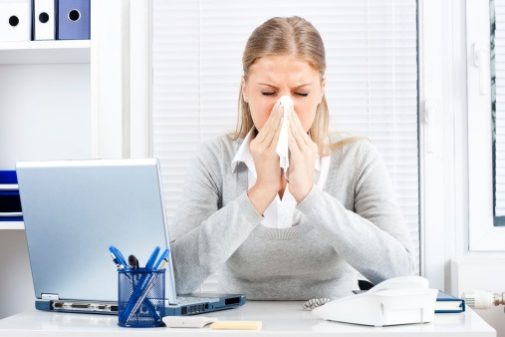12 steps to allergy-proof your home

As the trees and flowers start blooming, spring allergies are on the rise. While you may not be able to control the pollen outside, you can control allergens in your home.
Dr. Raymond Pongonis, a physician on staff at Advocate Good Samaritan Hospital in Downers Grove, Ill. who specializes in allergies, asthma and immunology for both children and adults, says many people suffer from both indoor and outdoor allergies.
“Outdoor allergens such as mold spores, tree pollen or ragweed can hit patients like a brick wall in peak seasons, causing itchy, watery eyes, runny nose, constant sneezing and sometimes hives. In contrast, indoor allergens like dust mites, mold or a pet can present with more subtle symptoms like smoldering congestion, post nasal drainage and a cough that patients often come to accept as normal. These symptoms never go away, but tend to worsen in the winter when we spend more time indoors. Constant exposure to indoor allergens can trigger inflammation and can lead to recurrent sinus infections as well,” says Dr. Pongonis.
In fact, allergies are on the rise, according to Asthma and Allergy Foundation of America. Allergies affect nearly 50 million Americans and are the fifth leading chronic disease in the country.
Dr. Pongonis offers the following tips to allergy-proof your home on a weekly basis:
- Vacuum
- Wash bedding
- Dust surfaces with a damp cloth
- Mop floors
- Scrub kitchen and bathroom sinks, faucets, shower and bathtub
- Clean refrigerator of out-of-date food and wipe up excess moisture to avoid mold
- Wipe window blinds
- Declutter surfaces as knickknacks collect dust
- Bathe indoor pets to reduce dander, and when possible, keep out of bedrooms
On a monthly basis, Dr. Pongonis suggests cleaning or replacing furnace or air-conditioner filters; vacuum couches and chairs, and wash stuffed animals or place then in a plastic bag in the freezer for a few days.
“While not always fashionable, wearing a mask while doing both indoor and outdoor household chores can make a difference. Or your allergist might be able to supply you with a prescription to get someone else to handle the cleaning. However, patients must be aware that some of the fragrant products we use to clean are classic triggers of non-allergic rhinitis and can present very similarly to allergy,” says Pongonis.
There are medication interventions to treat allergy symptoms, and an allergist can also talk to patients about the option to pursue immunotherapy or allergy shots for long term control of allergies, says Dr. Pongonis.
“However, our number one treatment for all forms of allergy will always be avoidance,” he says.
Related Posts
Comments
About the Author
Johnna Kelly, healthe news contributor, is a manager of public affairs and marketing at Advocate Christ Medical Center in Oak Lawn. She is a former newspaper reporter and spent nearly 10 years as a public relations professional working for state and county government. During her time as a communications staffer for the Illinois General Assembly, she was integral in drafting and passing legislation creating Andrea's Law, the nation's first murderer registry. In her spare time, she volunteers at a local homeless shelter, enjoys traveling, photography and watching the Chicago Bulls.

















